Introduction
In today’s highly regulated shipping environment, members sometimes voice their concerns about the amount of time and effort spent on facilitating shipboard inspections by flag state, class, port state control, charterers and their insurers . Why are all of these separate and apparently similar surveys necessary?
This Risk Bulletin seeks to raise awareness of the unique purpose and objectives of a P&I Condition Survey (which may also be accepted as a pre-entry survey for H&M cover offered by MMIA) and highlight the benefits to the member. Additionally, member concerns regarding P&I survey costs and operational disruption will be considered and some practical advice provided.
Background
P&I Condition Surveys are distinctive in that, unlike all other surveys, their primary and pro-active purpose is to identify P&I risks that may expose a member to liabilities and lead to costly delays and unnecessary disputes with commercial partners. As such, a condition survey is a proven risk management process which can provide tangible returns that far exceed the relatively low cost of the P&I Survey fees and member effort expended.
The objectives of an MMIA P&I Survey are to:
- Identify vessel structure, equipment and operational deficiencies and/or ISM Code non-conformities that constitute significant P&I risk and;
- Provide recommendations to accomplish practical and prompt deficiency rectification to minimise all identified P&I risks to industry recognised ‘as low as reasonably practicable’ (ALARP) standards.
P&I Survey Guidance
The scope of a P&I Condition Survey and the manner in which it is to be accomplished are detailed in MMIA’s Guidance Notes to Members, Guidance Notes to Surveyors and P&I Condition Survey Forms. Members should ensure that their ship managers and masters assess and review these guidelines well before the designated date of a P&I Survey. This will assist their ship managers and shipboard management team to plan and action pre-survey checks and preparations with the goal of minimising operational disruption and avoiding the additional cost of a follow-up survey.
P&I Survey Obligations
When a risk is presented for entry or when renewal terms are being offered, MMIA will let the member know if a P&I Condition Survey is required. The decision is based on a number of underwriting considerations such as the vessel’s age, type, flag, trading area, the past claims record, etc.
MMIA General Rule 17 provides the Club’s Managers with the discretionary entitlement to appoint a surveyor to conduct a P&I Condition Survey at any time during the period of entry. If there is a recent and comparable condition survey available or if the vessel has been docked and overhauled recently, MMIA may consider waiving the P&I Condition Survey on a case-by-case basis and solely at its discretion.
P&I Survey Warranties
The P&I Survey Requirements referred to above will be detailed in an MMIA P&I Survey Warranty which will be clearly stated in the quotation or renewal terms and subsequently in the Certificate of Cover (COC) and in the Certificate of Entry (COE) or Endorsement. Members are respectfully reminded that, in insurance terms, a warranty term constitutes a binding promise by the member.
There are two principal forms of MMIA P&I Survey Warranty as outlined below.
- If a P&I Survey is required, then the member’s first promise is that the survey will be completed within the designated period e.g. prior to inception or 30 days after inception. The member’s second promise is that, after the survey has been carried out, the surveyor’s recommendations will be fully complied with.
- If a P&I survey is not required because comparable surveys may prove acceptable, then the member first promises the supporting documents will be provided to MMIA for assessment and review. If the documents prove adequate, the member’s second promise is that the recommendations contained in the Full Risk Assessment (FRA) (see below) will be fully complied with. If the documents prove inadequate, the vessel must undergo a P&I Condition Survey.
MMIA Full Risk Assessment (FRA)
On completion of the P&I survey, the report will be reviewed by MMIA’s independent third party risk assessor to prepare a Full Risk Assessment (FRA). The assessor may also be asked to prepare a FRA based on a previous and comparable survey report or a docking report, The FRA evaluates the report’s observations and recommendations against a range of P&I focused risk assessment factors, inclusive of probability, frequency and consequences.
A copy of the FRA will be sent to the Member. MMIA will then work together with the Member to review and implement the FRA recommendations. The goal is to accomplish full compliance with the survey warranty so that the member is fully protected by their P&I cover.
Conclusion and Takeaway
In general, risk management in all shipowners is comprised of two fundamental elements:
1st : The identification, assessment and minimisation all of the risks which the shipowner has the capability to control and reduce to the ALARP level.
2nd: The comprehensive insurance the shipowner requires to cover the risks that are beyond their reasonable control.
Effective and optimal risk management can only occur when both elements are working together to common purpose. This can often go wrong if the 1st element is not completed properly and/or is not maintained. For MMIA members, P&I Condition Surveys and FRAs constitute the 1st element of the risk management and control process. If these surveys are accomplished properly and effectively, then members will be on track to ensuring the full benefit of the 2nd element of risk management; their MMIA P&I insurance cover. MMIA would therefore encourage its members to recognise that the P&I Survey and FRA process is a unique risk management tool which can provide them with a positive return on investment.


